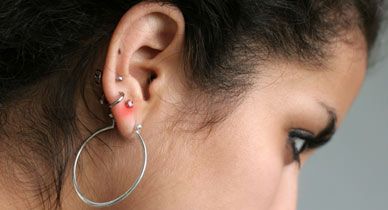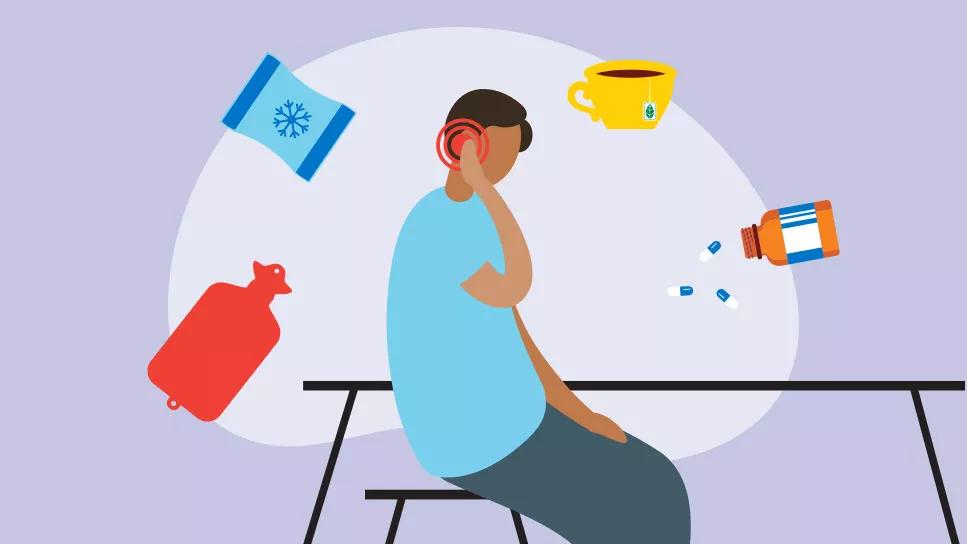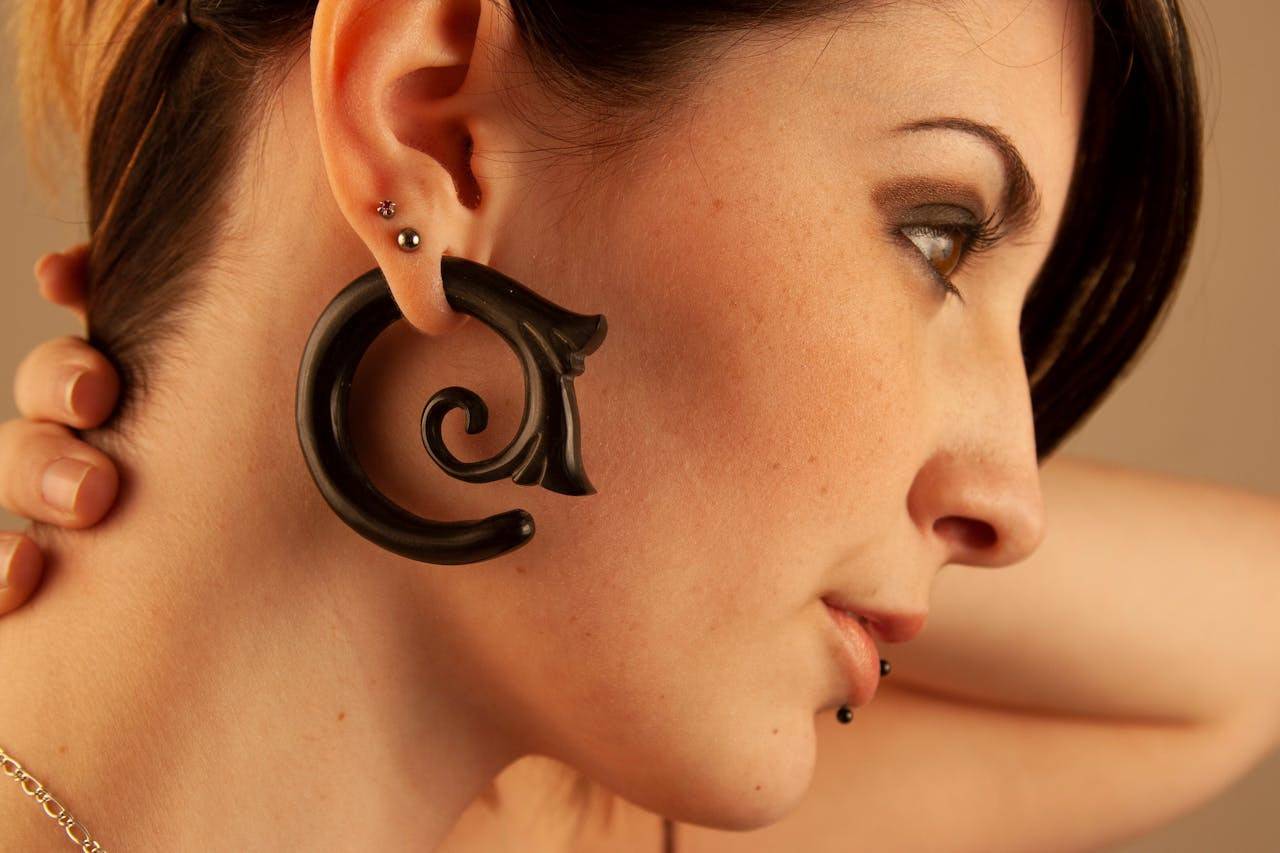Earrings Infection After Piercing? Here’s What You Need to Know. Piercing your ears can be an exciting way to express your personal style, but it also comes with its own set of challenges. One of the most common issues is an Earrings Infection that may develop if proper care is not taken. This article guides you through everything you need to understand about Earrings Infection—from the causes and signs to prevention and care—all in a friendly tone that makes the topic easy to digest.
Earrings Infection: Understanding What It Is
An Earrings Infection is an inflammation that occurs in the pierced area, typically due to bacteria entering the wound. When you pierce your ears, you create a small opening in the skin—a natural doorway for germs. Under normal conditions, your immune system would manage any contaminants, but if the hygiene standards aren’t met during or after the procedure, bacteria can seize the opportunity and cause an infection.
The inflammation is usually accompanied by redness, swelling, pain, and sometimes a discharge from the piercing site. Notably, the appearance of these symptoms does not necessarily mean you have a severe infection. Often, it may begin as a mild irritation that, if not properly addressed, could escalate into a more significant problem.
Earrings Infection: Common Causes and Risk Factors
Several factors contribute to the development of an Earrings Infection. Foremost among these is the piercing process itself. Using unsterilized equipment or not following proper aftercare procedures can introduce bacteria into the piercing wound. Additionally, the type of earrings chosen may also be a contributing factor. Earrings made from materials that cause allergic reactions or do not allow proper oxygen flow can worsen inflammation. (Read More: Trend Tone Shape Up Success).
Other common risk factors include:
- Touching the piercing with unclean hands
- Swimming in pools, hot tubs, or natural bodies of water before the piercing has healed
- Inadequate aftercare and cleaning routines
- Excessive sleeping on the newly pierced ear
- Applying makeup, hair products, or other chemicals near the piercing area
By being aware of these potential risks, you can take proactive steps to minimize the likelihood of developing an Earrings Infection.
Earrings Infection: Recognizing the Warning Signs
Early detection of an Earrings Infection is crucial for prompt treatment and healing. Here are some common symptoms you should look for:
- Redness and Swelling: The area around the piercing becomes visibly red and inflamed.
- Pain and Tenderness: Discomfort is a common sign, particularly if the pain intensifies over time.
- Heat: The surrounding skin may feel warm to the touch due to increased blood flow.
- Discharge: Yellowish or greenish pus might seep from the wound, indicating the presence of bacteria.
- Hardening or Discoloration of the Skin: In some cases, the skin might change color or become hard around the infected area.
Pay close attention to these signs, especially during the first few weeks after getting your ears pierced. Early intervention can prevent the infection from worsening.
Earrings Infection: Best Practices for Prevention
Prevention is always better than cure, especially when dealing with something as discomforting as an Earrings Infection. Ensuring you follow proper hygiene practices can significantly reduce the risk. Here are some friendly guidelines to help protect your new piercing:
- Choose a Reputable Piercing Studio: Make sure the establishment uses sterilized tools and follows stringent sanitary procedures. (Read More: Wisdom Rx Dive In Deep).
- Follow Aftercare Instructions: Your piercer will likely provide a detailed plan on how to take care of your ears. This often includes cleaning the area with a saline solution and avoiding touching the piercing without first washing your hands.
- Avoid Irritants: Stay clear of harsh chemicals such as makeup, hair sprays, and alcohol near the pierced area.
- Be Mindful of Your Environment: Avoid submerging the piercing in pools, hot tubs, or natural water bodies until it has healed completely.
- Use Hypoallergenic Earrings: If you have sensitive skin, consider earrings made from surgical steel, titanium, or gold. These materials are less likely to provoke allergic reactions, reducing the chance of an Earrings Infection.
Adopting these habits early on will play a significant role in maintaining healthy piercings.
Earrings Infection: The Role of Aftercare in Healing

Aftercare isn’t just a one-time action; it’s an ongoing process that is critical to avoiding an Earrings Infection. The healing process for an ear piercing can take anywhere from six weeks to several months, depending on your body’s response and the type of piercing you have.
Daily care should include:
- Gentle Cleaning: Use a saline solution two to three times a day. Avoid alcohol-based products as they can dry out the skin and exacerbate irritation. (Read More: Wellness Wisdom Top Healthy Tricks).
- Minimal Handling: Resist the temptation to twist or pull on your earrings. Frequent manipulation can delay healing and introduce additional bacteria.
- Monitoring for Changes: Keep an eye on the healing process, noting any redness, swelling, or discomfort that seems unusual.
By dedicating time each day to this routine, you’ll support your body’s healing process and reduce the chances of an Earrings Infection.
Earrings Infection: When to Seek Professional Help
Although minor irritation or mild infections can often be managed at home, it’s important to know when an Earrings Infection requires professional attention. If you notice that the symptoms worsen, such as an increase in pain, significant swelling, or a heavy, unpleasant odor from the discharge, it’s time to contact a healthcare professional. In some cases, antibiotics or specialized wound care might be necessary.
Other scenarios where professional help is advised include:
- Persistent Symptoms: If redness and swelling continue beyond a couple of weeks or do not improve with home care.
- Systemic Signs: High fever, chills, or an overall feeling of being unwell can signal that the infection is spreading.
- Allergic Reactions: If you suspect an allergic reaction to your earrings along with symptoms of infection, it’s important to get medical advice promptly.
Early professional intervention can prevent complications and ensure that your ear heals properly.
Earrings Infection: Home Remedies and Natural Treatments

For mild cases of an Earrings Infection, some home remedies might help to alleviate symptoms while you monitor the situation. While these remedies are not substitutes for professional care, they can provide relief during the early stages of infection:
- Warm Saline Soaks: Soaking the infected ear in a solution of warm water and non-iodized salt can help to draw out pus and promote healing.
- Tea Tree Oil: Known for its antibacterial properties, tea tree oil can be diluted with a carrier oil (like coconut oil) and lightly dabbed around the piercing. Be cautious, as tea tree oil can be potent and may cause irritation if used undiluted.
- Avoid Excessive Moisture: Keeping the area dry when it’s not being cleaned can help reduce bacterial growth.
- Aloe Vera Gel: Applying a small amount of pure aloe vera can soothe irritated skin and provide a gentle moisturizing effect.
Remember to use these remedies with care, and if the infection shows no signs of improvement within a couple of days, do not hesitate to seek professional help.
Earrings Infection: Debunking Common Myths
There are several misconceptions about Earrings Infection that often lead to improper care or undue worry. Some people believe that the infection will go away on its own without any intervention, while others may think that frequent cleaning can actually worsen the situation. The truth is, proper and balanced care is the key. Over-cleaning can indeed irritate the skin, whereas neglecting basic hygiene can open the door to infection.
Another common myth is that only inexperienced individuals suffer from Earrings Infection. In reality, even those with previous piercings can encounter infections, especially if the aftercare process is skipped or improperly managed. By debunking these myths, you can approach your ear care with a more informed and calm mindset.
Earrings Infection: Encouraging a Safe Piercing Experience

Ultimately, a safe and healthy ear piercing experience depends on informed decision-making and consistent care. Knowledge about Earrings Infection empowers you to take proactive steps to prevent complications. Whether you’re considering your first piercing or adding new earrings to your collection, understanding these risks and learning the proper aftercare techniques sets you on a path to a great piercing experience.
A friendly reminder is to always consult with your piercer if you have any questions about aftercare practices or if you notice early signs of an infection. Their expert advice can provide tailored recommendations that suit your specific situation, ensuring that your individual needs are met.
Taking the time to learn and implement these best practices is not only about preventing an Earrings Infection—it’s about enjoying your new look with peace of mind. With proper care and a proactive approach, you can embrace your unique style while keeping your ears healthy and infection-free.

